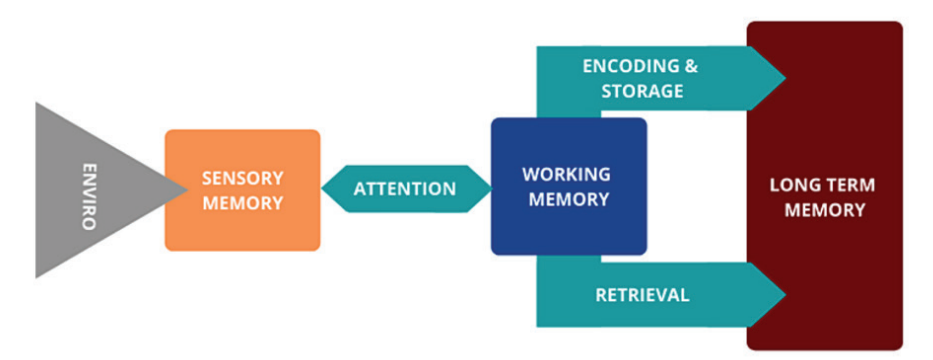
Repetition; Why and for What

Repetition. Why do we pay so a lot of attention to repetition if we can
just move ahead to learn something new? Don’t we waste our academic time
repeating a material more than a couple of times? Does repetition have
us stuck at the same stage of learning?
These are the questions that might pop up in your mind within tracking
your kid's academic development catching that “the educational calendar
is always about the same”.. Right? If yes, then it makes sense to read
this article to the end.
Here we go.
Repetition and learning. How do they interact?
Let’s take a deeper insight into what learning means. Below I give you
some suggestions taken from the well-known dictionaries and
web-resources to have different ideas of its definition.
“Learning is the activity of obtaining knowledge.” 1
“Learning is a process of acquiring new understanding, knowledge,
behaviors, skills, values, attitudes, and preferences.” 2
“Learning is the process of gaining knowledge and experience, for
example by studying.” 3
Now, let’s highlight the keywords of these definitions. They are
activity, process, acquiring. I believe that you will agree with me if I
consider “activity” or “process” as a sequence of some particular steps
to gain a goal. This raises a question: is repetition one of the steps
of learning? If it is then why?
Repetition is a consolidation of heard/seen material, that’s why we
build such a great amount of activities to stimulate information
decoding to store and retrieve the memory.
Learning and memory
It is essential to remember that learning is a function of memory
encoding and consolidation, which, in turn, are processes that change
the brain physically.
A helpful framework for thinking about how memory works is illustrated
in the above diagram which breaks the process into three components:

-
SENSORY MEMORY (Acquisition or Encoding)
Takes information from the environment through the human senses- sight, hearing, touch, taste, and smell. -
WORKING MEMORY (Consolidation or Storage)
Working memory (WM) is a system responsible for retaining and using memories. This is what you are conscious of, or what you are thinking about at any given moment. -
LONG TERM MEMORY (Retrieval)
We hold all our memories in here. The goal of learning is to move information here so we can use it later when we need it. LTM can be explicit and implicit. For memories to become long term memories, they need to be retrieved regularly. Unlike sensory and working memory, long-term memory capacity is unlimited.
Working memory and learning
To create a clearer vision of what you are going to be told about here
that all we keep in our mind is stored. Our brain is like a huge
warehouse filled up with billions of things. But the meter is how it is
packed. It is packed in some categories. In other words, you can
envision our brain as a set of drawers categorized by some criteria. The
phenomenal feature of our brain is that it is so much structured. We can
store items only if we have categories for things that are being
stored.
Every day, in the classroom, children are bombarded by big vast of
information- lyrics of songs they heard newly, a story they were told,
new colors, numbers, shapes, vocabulary, teacher speech, interaction
with each other, various tasks, the things they experienced during the
activities and so on. Given language exposure sounds puzzled, right?
Such a long list to think about and a more complicated list to deal
with. However, all of these “brain stimuli” can be memorized if they are
put into unique categories for that thing. That’s why working towards
one academic unit consumes a decent time (time needed for obtaining
depends on the student's age group and language level).
From theory to practice
Let’s put all that you’ve read here into practical use through the prism
of stages of memory I talked about so far.
For example, teaching the color green to 3 years old kids group.
- Acquisition Kids are getting to know the color via showing the flashcard of color green and asked to repeat. It is a daily basis process that takes part during circle time.
- Consolidation To fix the color into memory we pass through activities that help consolidate it. For instance, we provide a series of art, science, sensory activities. Mainly they are combined activities such as STEM + Vocabulary building, singing song + TPR, etc. The aim is to create an association and strong visual and verbal connections in memory to be able to decode them when needed.
- Retrieval It is alike a button “Save ” on your computer. Whilst we have the information inside our brain we can manipulate it to turn that into long-term memory. Retrieval is not a raw rehearsal. It is an order of tricks that pushes learners to live language thus create new skillsets to use it naturally.
To summarize we come up with the outcome that is we learn through
repetition that lies based on language development. Knowing the main
processes of how the brain and memory settled we get keys to unlock
facts and features that help to build a proper educational approach.
“What fires together wires together,”
say, neuroscientists, which is why repetition supports learning while
the absence of repetition and exposure results in its decay.
https://dictionary.cambridge.org/dictionary/english/learning
https://en.wikipedia.org/wiki/Learning
https://www.macmillandictionary.com/dictionary/british/learning
